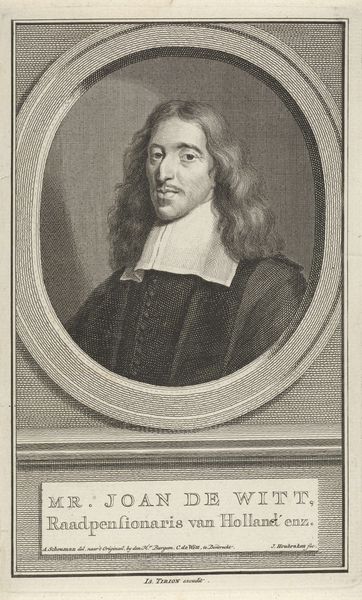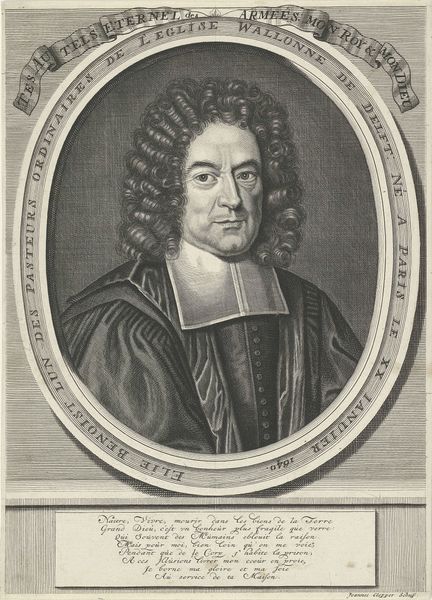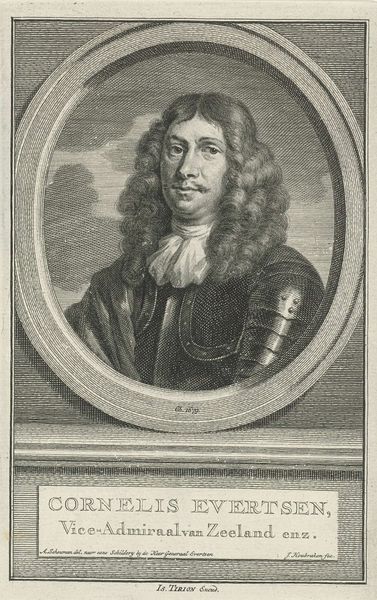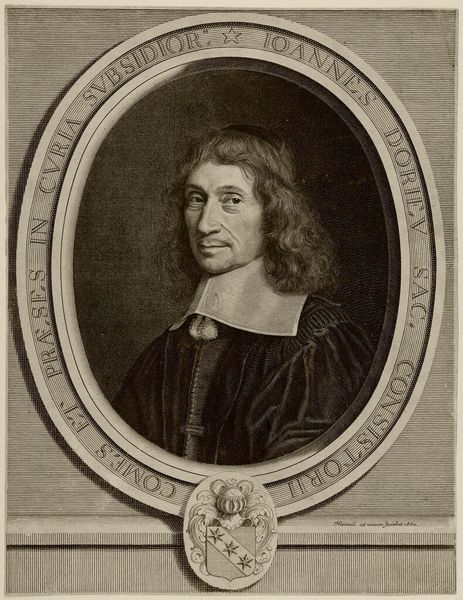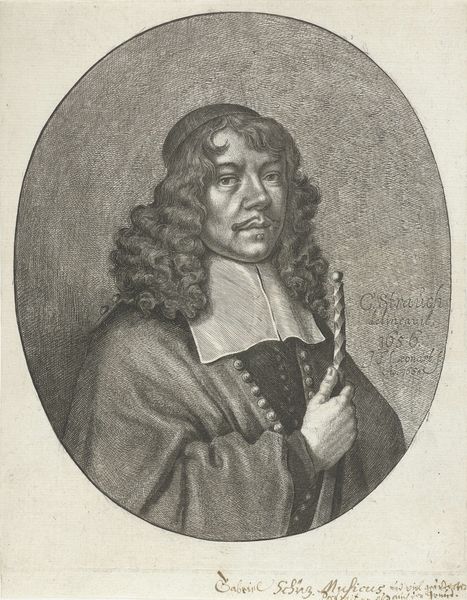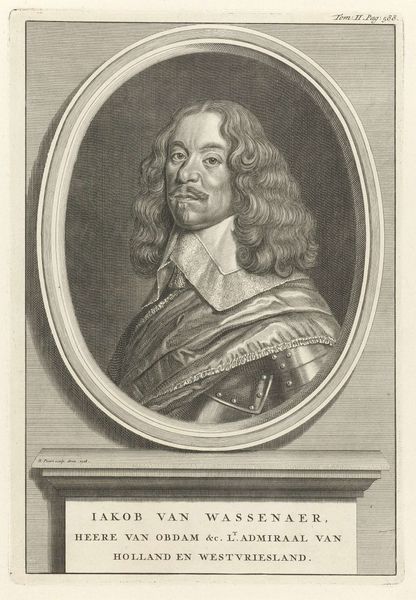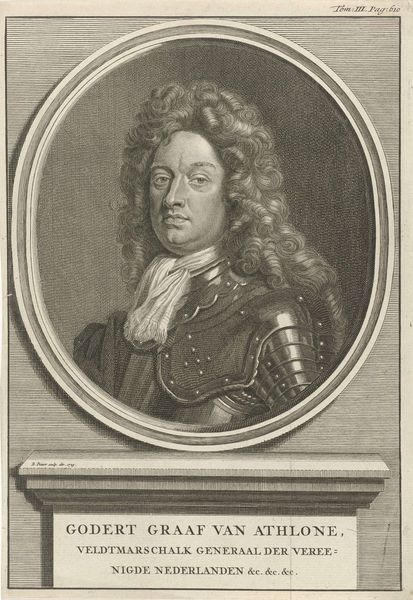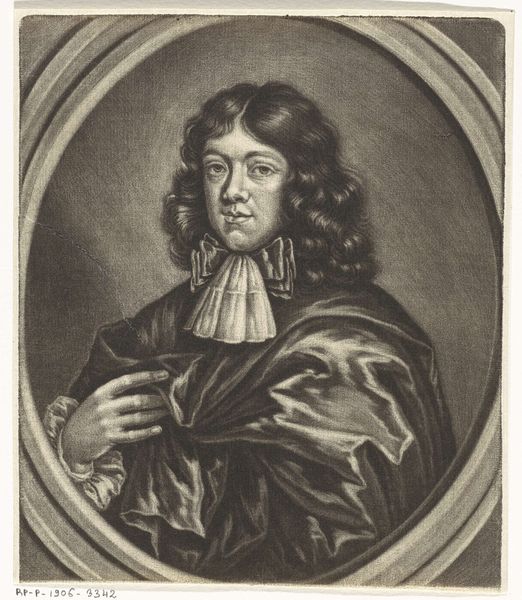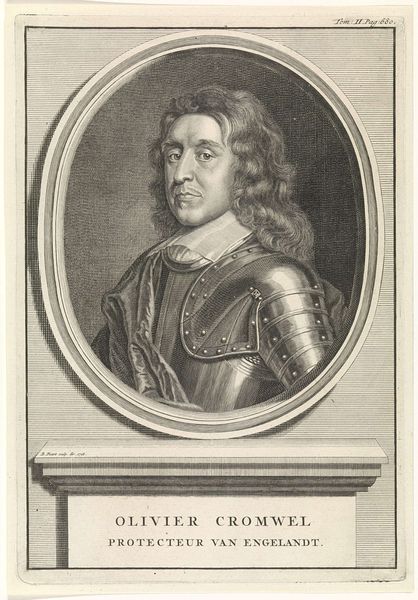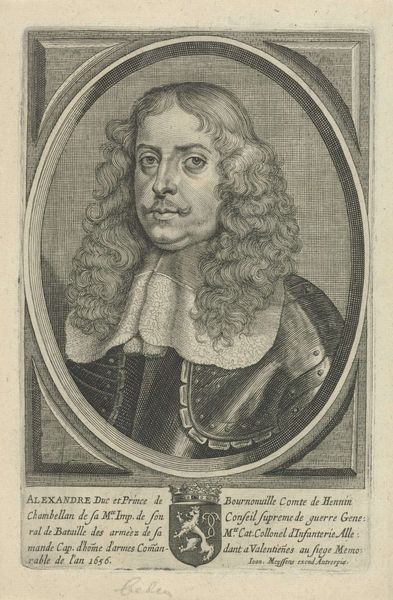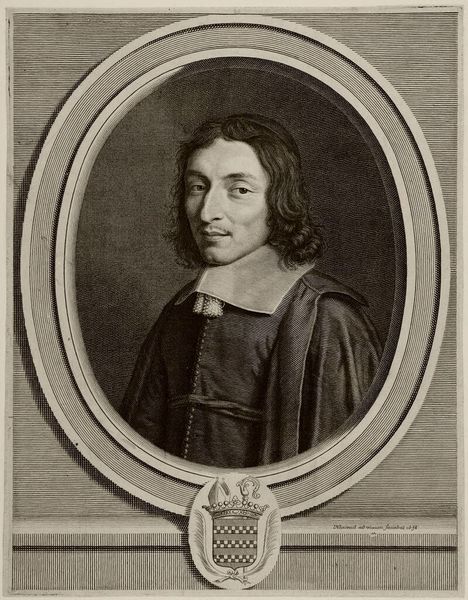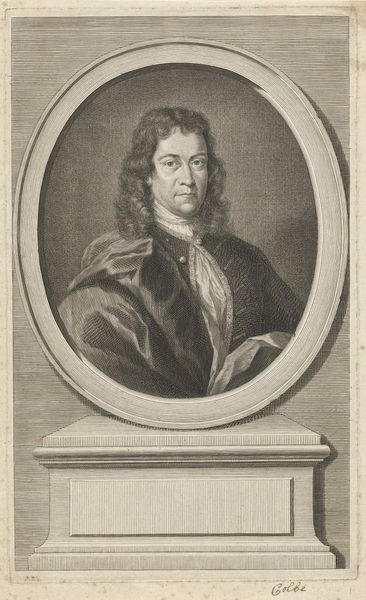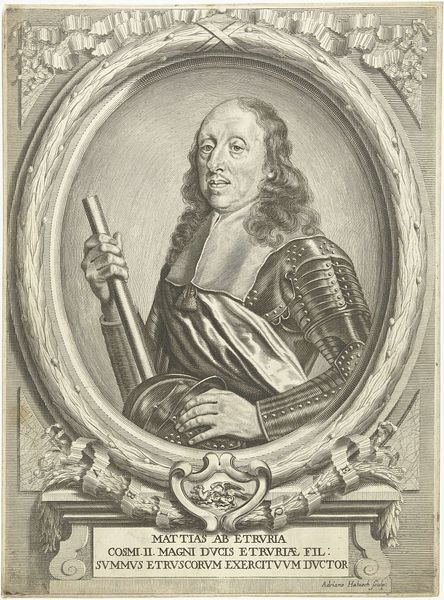
engraving
#
portrait
#
baroque
#
old engraving style
#
line
#
portrait drawing
#
engraving
Dimensions: height 187 mm, width 140 mm
Copyright: Rijks Museum: Open Domain
This is David Loggan’s portrait of Thomas Willis, made using engraving techniques in the 17th century. Engraving is a printmaking process where the artist meticulously carves lines into a metal plate, which are then filled with ink and transferred to paper. Look closely and you'll notice the incredible detail achieved through this process. Each tiny line contributes to the overall image, defining Willis's features and the textures of his clothing. The choice of engraving as a medium carries its own significance. It was a process that demanded skill, precision, and time, reflecting the status and importance of the sitter. Engravings like this were often commissioned as commemorative objects or to disseminate images of important figures, functioning as a form of early mass media. The labor-intensive nature of engraving also speaks to broader social issues of labor and production. It reminds us that every artwork is the product of human effort and skill, challenging the traditional art-historical focus on artistic genius alone. By appreciating the materials, making, and social context of Loggan’s work, we can gain a deeper understanding of its meaning and significance.
Comments
No comments
Be the first to comment and join the conversation on the ultimate creative platform.
